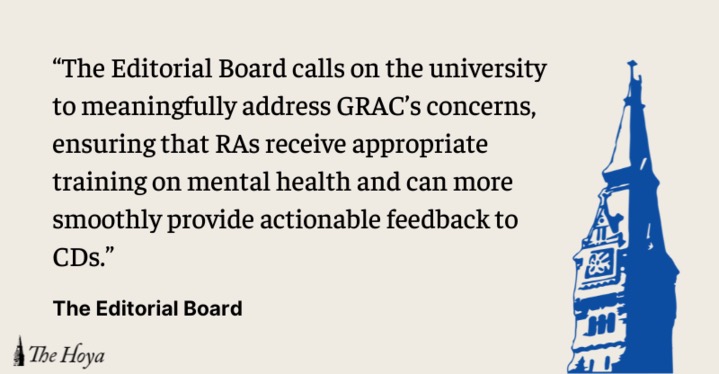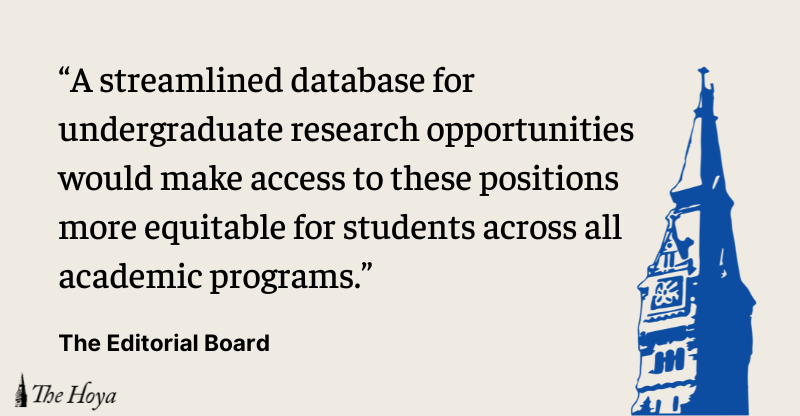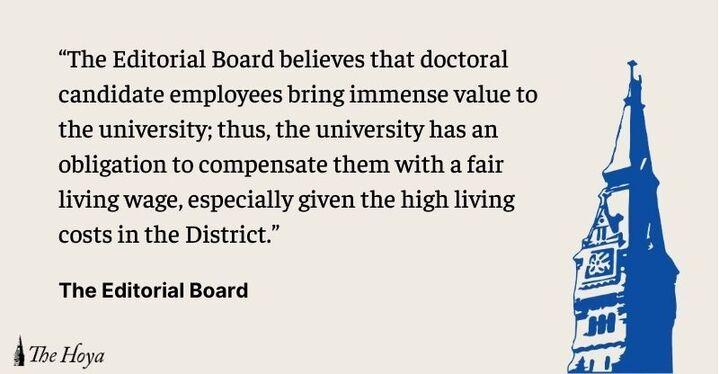In the latest chapter of the 2010 Campus Plan saga, the university submitted a host of new concessions in its proposal to the D.C. Zoning Commission last week. According to the campus plan website, the amendments are a response to, among other things, “community concerns.” This thinly veiled allusion to the town-gown tensions is telling; most of the significant changes to the plan are concessions to the demands bellicosely vocalized by the more aggressive members of the Advisory Neighborhood Commission and other neighbors.
What is unexpected about the newest turn of events, however, is the fact that the university — although it is continuing to backtrack on its development goals in order to appease its critics — appears to have grown a backbone.
Over the course of the campaign against the campus plan, opponents have painted Georgetown’s undergraduate and graduate students living off-campus as delinquents that have materially contributed to a measurable deterioration in the quality of living conditions in the surrounding neighborhoods. Many of the neighborhood representatives up in arms against Georgetown have drawn much of their firepower from a study of the Burleith area conducted by Burleith Citizens Association President Lenore Rubino.
Conveniently, Rubino chose not to share her report with the public, leaving the university virtually blind in defending itself whenever the BCA president cites figures to back up her claims. Last week, however, the university finally struck back by releasing the findings of Bolan Smart Associates, an independent consulting firm hired to conduct a parallel study of the impact that students who live off campus have on the neighborhoods of Burleith and West Georgetown.
The degree to which the Bolan Smart report contradicts the claims Rubino and her cohorts have been making is almost comical. Rubino has insisted that 48 percent of Burleith residences are rentals, most of which are occupied by students. Rubino and her supporters have argued that Georgetown is not doing enough to increase on-campus housing to compensate for a 4,000-person rise in the student population since 2000. The implication, of course, is that students are slowly but surely intruding on the surrounding neighborhood.
Bolan Smart, however, has determined that only 36 to 41 percent of Burleith homes are leased by non-owners. Moreover, despite the doomsday-like assertion that students are encroaching on Burleith, Bolan Smart’s data demonstrates that over the last decade, the percentage of residences that are owner-occupied has actually increased by 6 percent in Burleith and 4 percent in West Georgetown.
In addition, the report points out that more than half of the growth in the student population is due to a rise in the number of graduate students who have little to no presence in Burleith. Since 2000, the combined enrollment of the graduate school and the School of Continuing Studies has increased by 2,992. In the last 10 years, however, the number of residences in Burleith and West Georgetown that house graduate students has remained relatively steady. Currently, only 2 to 3 percent of graduate students live in either neighborhood.
The university originally proposed the addition of 2,100 graduate students in the campus plan, but recently cut that number in half in order to appease objecting neighbors. Yet if the trend of current graduate students living outside Georgetown holds, even with the addition of 2,100 graduate students there would only be a demand for, at most, 18 additional graduate student residences in Burleith and West Georgetown combined. That projection casts further doubt on the already puzzling emphasis the ANC and BCA have placed on portions of the Campus Plan pertaining to graduate students.
The kicker, however, is the evidence Bolan Smart presents regarding the charges levelled by Rubino and others that the presence of student renters in Burleith adversely affects the area’s property values. According to the report’s figures, home values in Burleith have not only increased over the last decade, but they have increased at a rate 83 percent higher than home values in the District as a whole.
What’s more, the Bolan Smart data partially takes aim at the accusation launched by anti-campus plan residents that an increase in students living off campus leads to poor property upkeep in Burleith. While the report acknowledges that there are some “poorly maintained undergraduate homes” in Burleith, it also states that a number of these area houses are not rentals and are, in fact, occupied by families. In other words, the blame for the drab appearance of some Burleith houses cannot be shunted entirely on students. Likewise, sloppiness on the part of a few owners or landlords has apparently not stopped Burleith from continuing to thrive as a housing market.
As a firm, Bolan Smart Associates’ client list lends a fair share of credibility to its report. Its previous clients are as diverse and prestigious as John Hopkins University, the Disney Development Company and the federal government. Rubino, on the other hand, may harbor a questionable bias because of her position as BCA president; she also fails to list any consulting experience on the website of her real estate agency. Although her position should not be dismissed entirely and both studies ought to be judged on their own merits, Bolan Smart’s track record speaks for itself.
Yet while Bolan Smart’s credentials are impressive, the tangible effects the report will have on the DCZC’s decision regarding the campus plan remains to be seen. One thing that students can be thankful for though is that the university has finally decided to fight fire with fire. Its new offensive approach may be late in the game, but by taking a stand against the less-than-foolproof arguments of the ANC and BCA, Georgetown has upped the ante. Looking forward, with the contracting of the Bolan Smart report, the university has shown the neighbors that they will not be able to walk all over its institutional development when the time comes for the 2020 Campus Plan.













